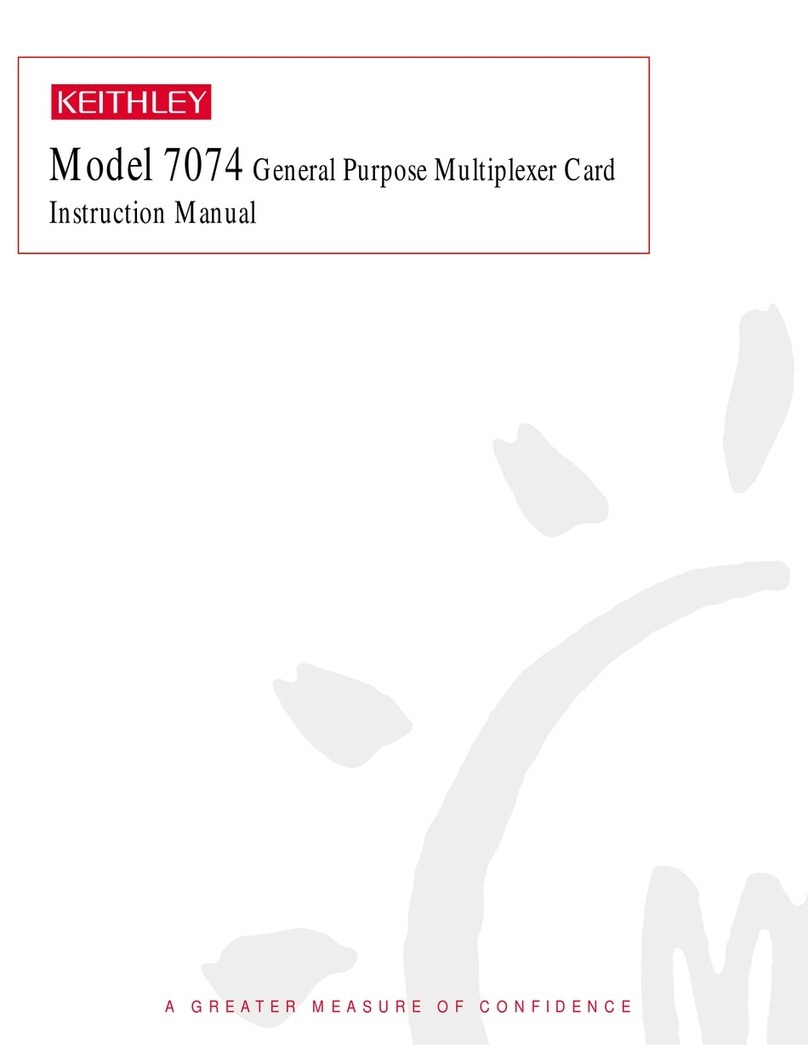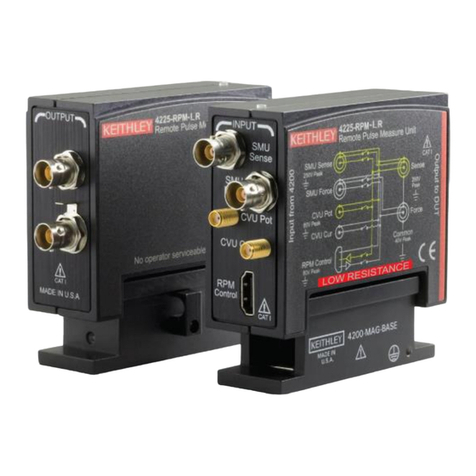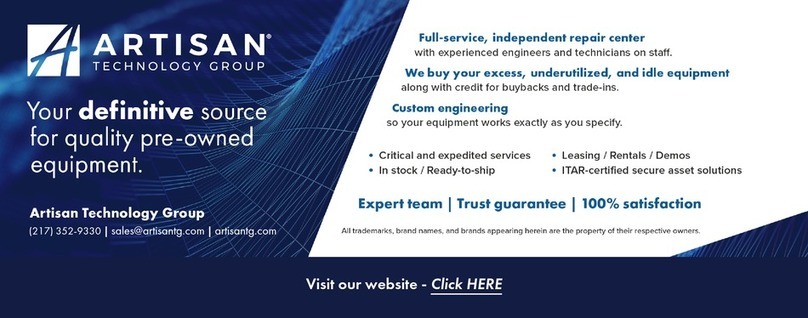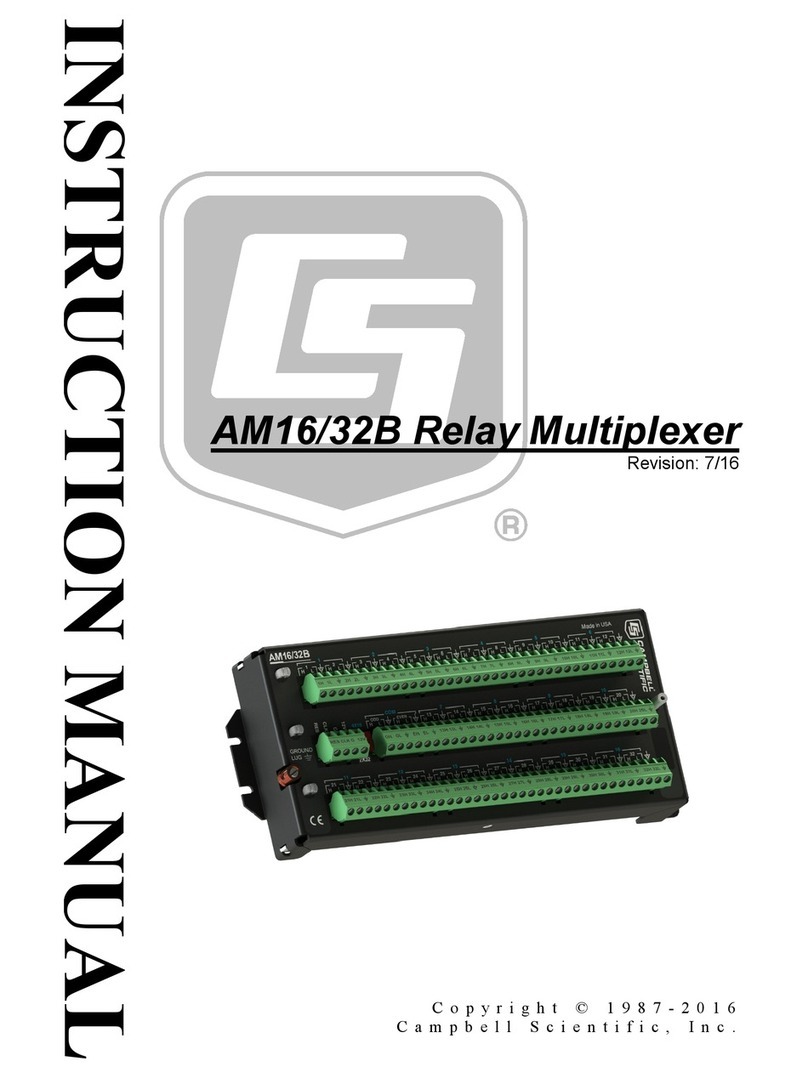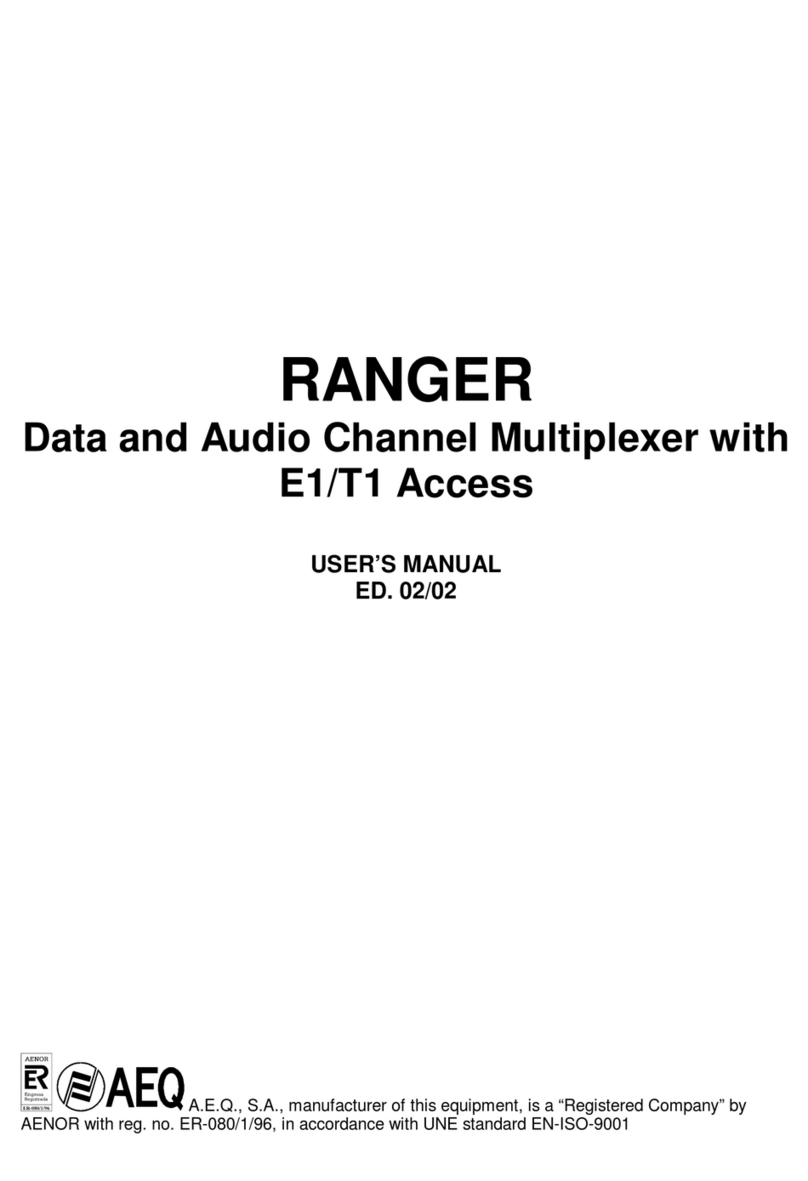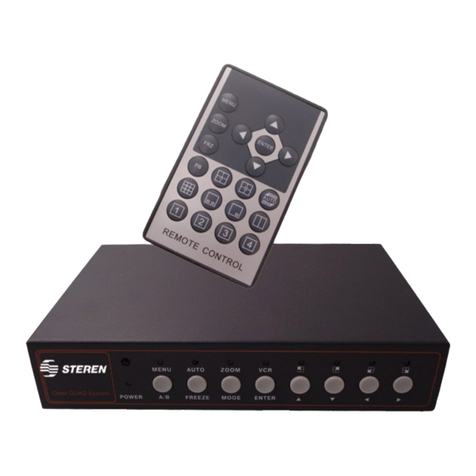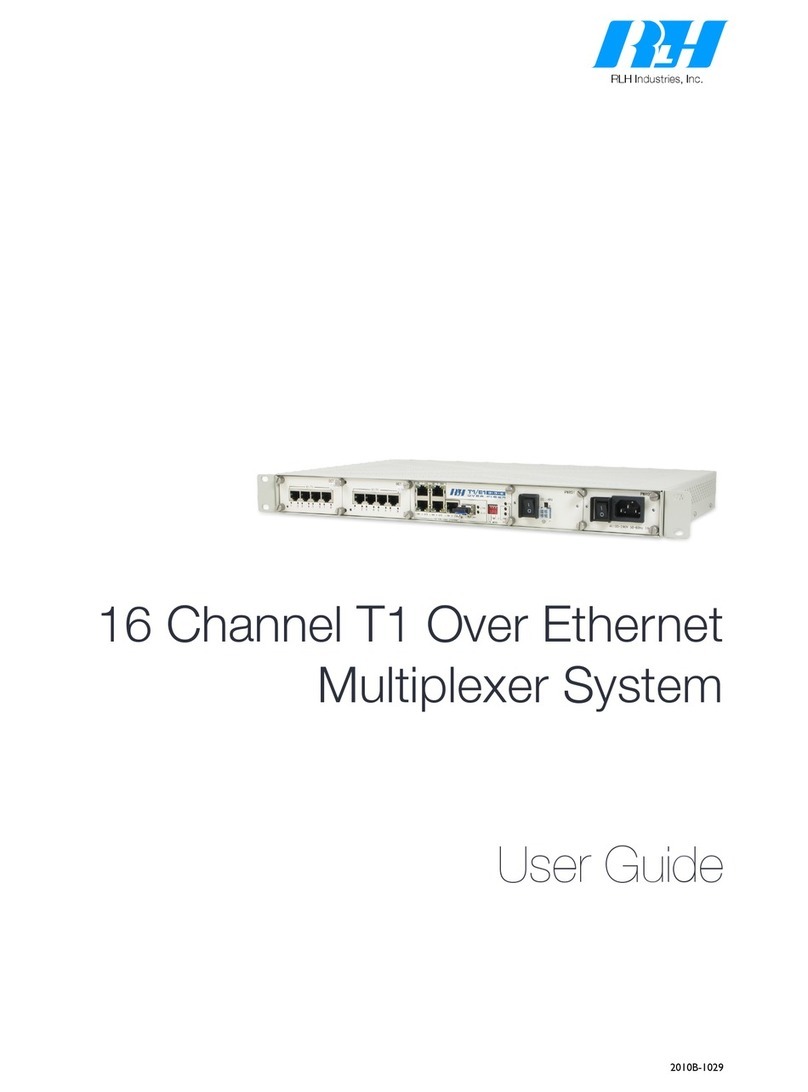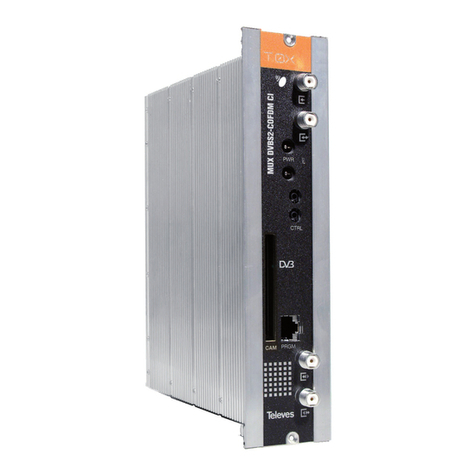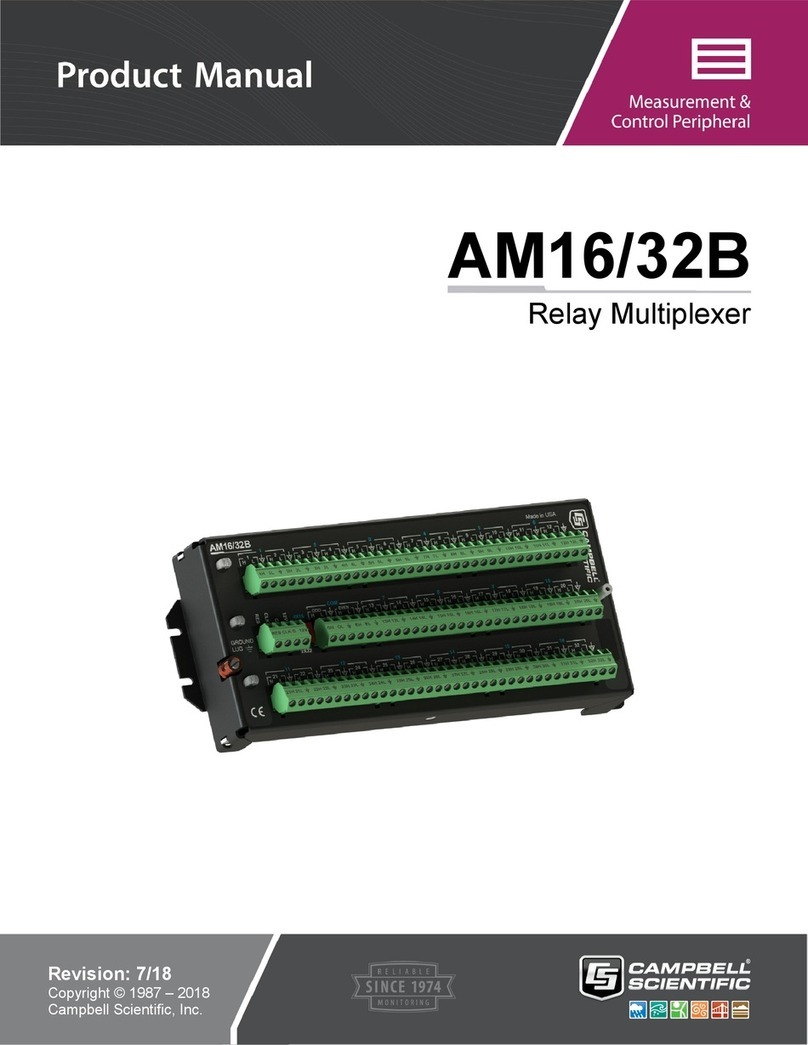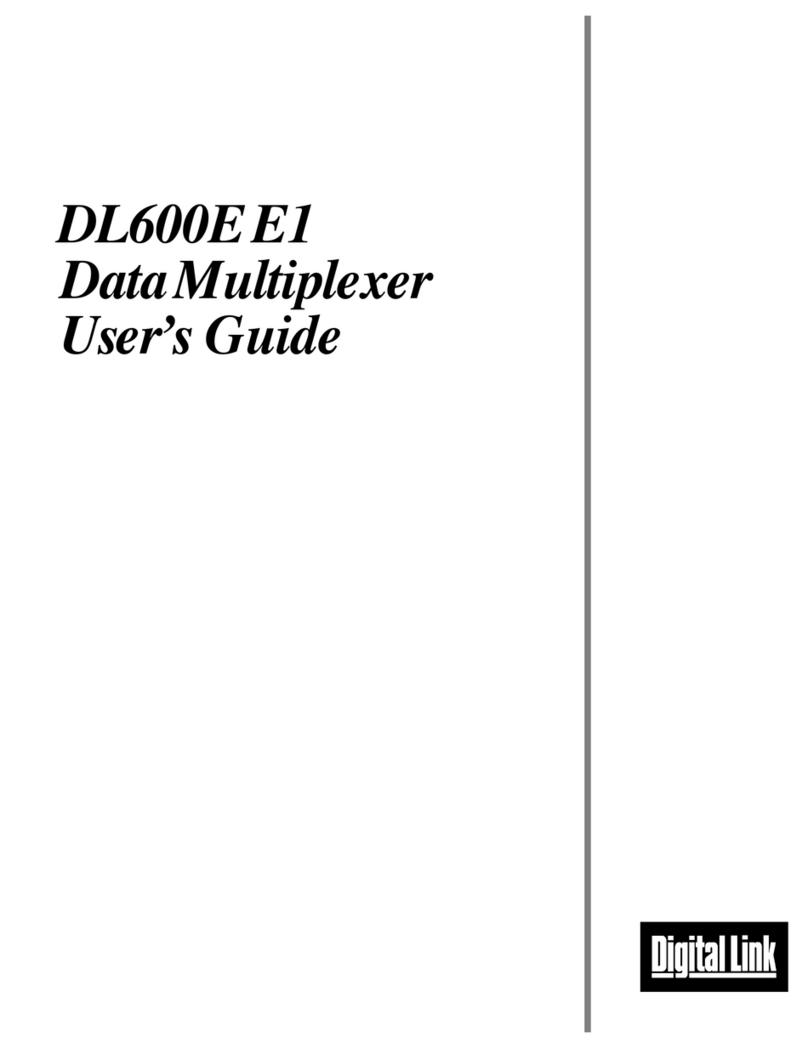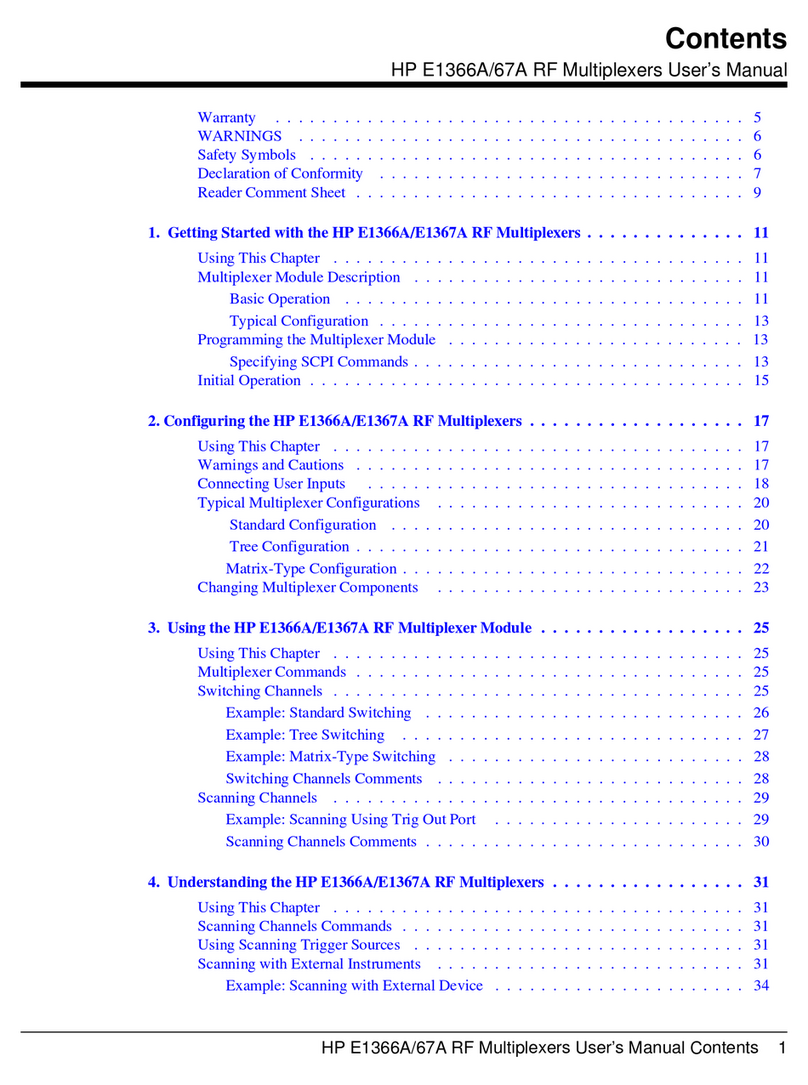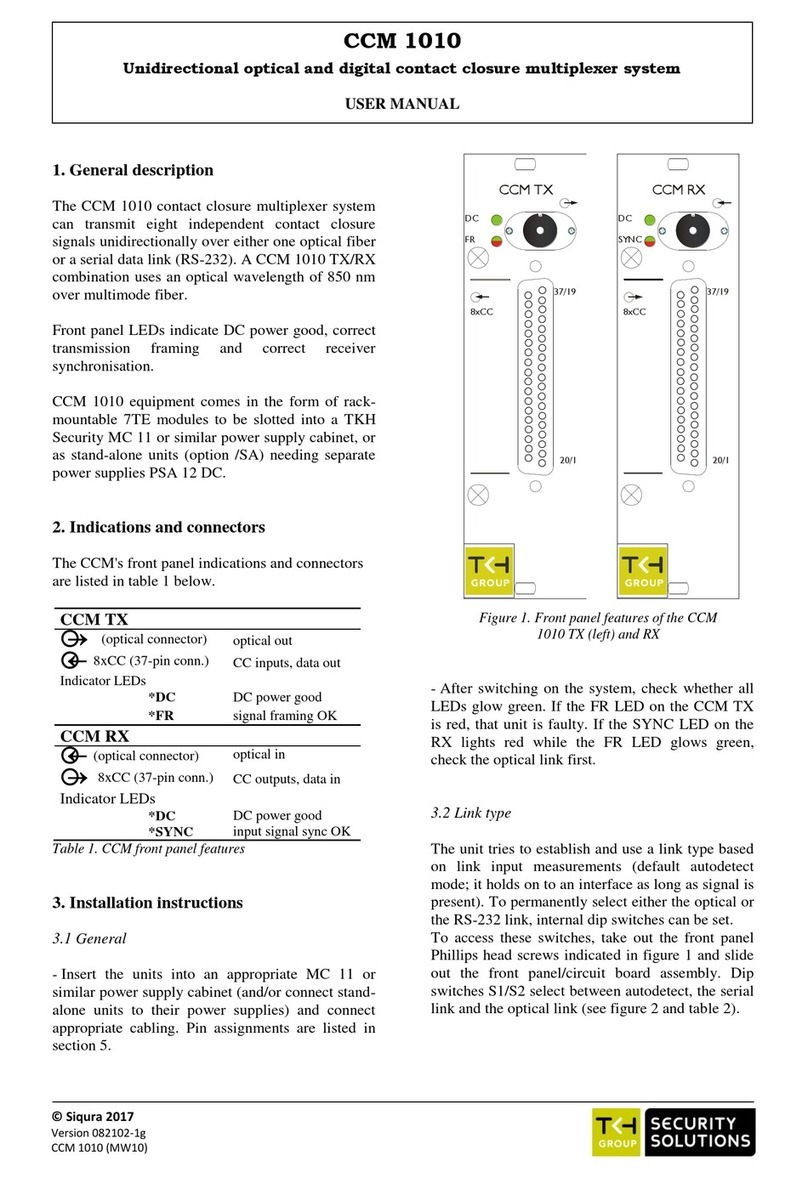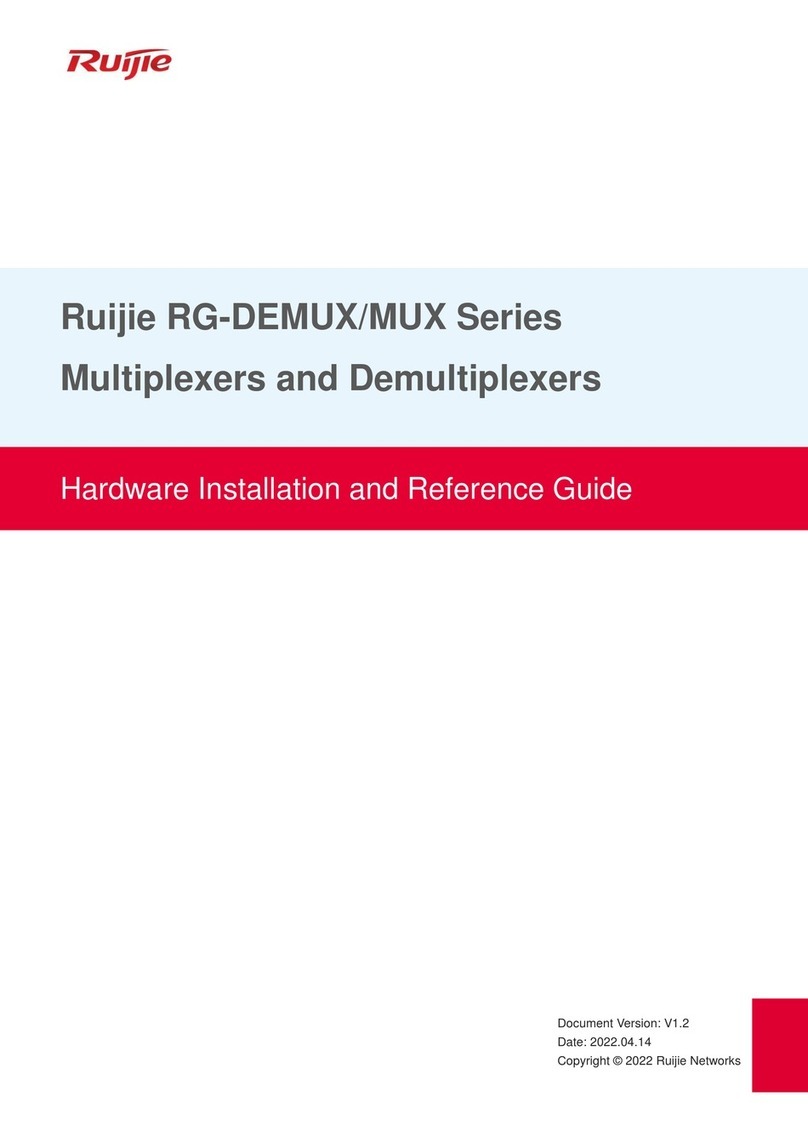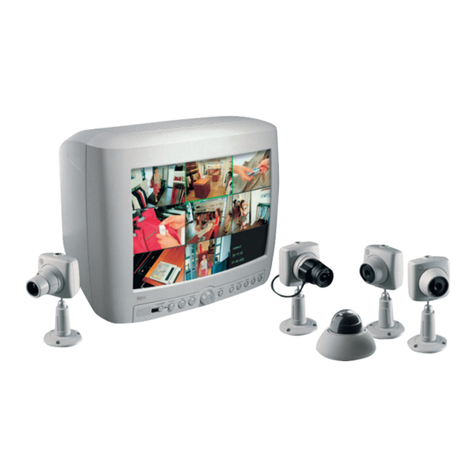Keithley 7999-2 User manual

WARRANTY
Keithley Instruments, Inc. warrants this product to be free from defects in material and workmanship for a period of 1 year from
date of shipment.
Keithley Instruments, Inc. warrants the following items for 90 days from the date of shipment: probes, cables, rechargeable batter-
ies, diskettes, and documentation.
During the warranty period, we will, at our option, either repair or replace any product that proves to be defective.
To exercise this warranty, write or call your local Keithley representative, or contact Keithley headquarters in Cleveland, Ohio.You
will be given prompt assistance and return instructions. Send the product, transportation prepaid, to the indicated service facility.
Repairs will be made and the product returned, transportation prepaid. Repaired or replaced products are warranted for the balance
of the original warranty period, or at least 90 days.
LIMITATION OF WARRANTY
This warranty does not apply to defects resulting from product modification without Keithley’s express written consent, or misuse
of any product or part. This warranty also does not apply to fuses, software, non-rechargeable batteries, damage from battery leak-
age, or problems arising from normal wear or failure to follow instructions.
THIS WARRANTY IS IN LIEU OF ALL OTHER WARRANTIES, EXPRESSED OR IMPLIED, INCLUDING ANY IMPLIED
WARRANTY OF MERCHANTABILITY OR FITNESS FOR A PARTICULAR USE. THE REMEDIES PROVIDED HEREIN
ARE BUYER’S SOLE AND EXCLUSIVE REMEDIES.
NEITHER KEITHLEY INSTRUMENTS, INC. NOR ANY OF ITS EMPLOYEES SHALL BE LIABLE FOR ANY DIRECT,
INDIRECT, SPECIAL, INCIDENTAL OR CONSEQUENTIAL DAMAGES ARISING OUT OF THE USE OF ITS INSTRU-
MENTSAND SOFTWARE EVEN IF KEITHLEY INSTRUMENTS, INC., HAS BEEN ADVISED IN ADVANCE OF THE POS-
SIBILITY OF SUCH DAMAGES. SUCH EXCLUDED DAMAGES SHALL INCLUDE, BUT ARE NOT LIMITED TO: COSTS
OF REMOVAL AND INSTALLATION, LOSSES SUSTAINED AS THE RESULT OF INJURY TO ANY PERSON, OR DAM-
AGE TO PROPERTY.
Keithley Instruments, Inc.
• 28775Aurora Road • Cleveland, OH 44139 • 440-248-0400 • Fax: 440-248-6168 • http://www.keithley.com
BELGIUM: Keithley Instruments B.V.
Bergensesteenweg 709 • B-1600 Sint-Pieters-Leeuw • 02/363 00 40 • Fax: 02/363 00 64
CHINA: Keithley Instruments China
Yuan Chen Xin Building, Room 705 • 12Yumin Road, Dewai, Madian • Beijing 100029 • 8610-62022886 • Fax: 8610-62022892
FRANCE: Keithley Instruments Sarl
B.P. 60 • 3, allée des Garays • 91122 Palaiseau Cédex • 01 64 53 20 20 • Fax: 01 60 11 77 26
GERMANY: Keithley Instruments GmbH
Landsberger Strasse 65 • D-82110 Germering • 089/84 93 07-40 • Fax: 089/84 93 07-34
GREAT BRITAIN: Keithley Instruments Ltd
The Minster • 58 Portman Road • Reading, Berkshire RG30 1EA • 0118-9 57 56 66 • Fax: 0118-9 59 64 69
INDIA: Keithley Instruments GmbH
Flat 2B, WILOCRISSA • 14, Rest House Crescent • Bangalore 560 001 • 91-80-509-1320/21 • Fax: 91-80-509-1322
ITALY: Keithley Instruments s.r.l.
Viale S. Gimignano, 38 • 20146 Milano • 02/48 30 30 08 • Fax: 02/48 30 22 74
NETHERLANDS: Keithley Instruments B.V.
Postbus 559 • 4200AN Gorinchem • 0183-635333 • Fax: 0183-630821
SWITZERLAND: Keithley Instruments SA
Kriesbachstrasse 4 • 8600 Dübendorf • 01-821 94 44 • Fax: 01-820 30 81
TAIWAN: Keithley Instruments Taiwan
1 Fl. 85 Po Ai Street • Hsinchu, Taiwan, R.O.C. • 886-3572-9077• Fax: 886-3572-9031
6/99

Manual Print History
The print history shown below lists the printing dates of all Revisions and Addenda created
for this manual. The Revision Level letter increases alphabetically as the manual undergoes sub-
sequent updates.Addenda, which are released between Revisions, contain important change in-
formation that the user should incorporate immediately into the manual.Addenda are numbered
sequentially.WhenanewRevisioniscreated, allAddenda associated with the previous Revision
of the manual are incorporated into the new Revision of the manual. Each new Revision includes
a revised copy of this print history page.
RevisionA (Document Number 7999-2-901-01).................................................... September 1999
All Keithley product names are trademarks or registered trademarks of Keithley Instruments, Inc.
Other brand names are trademarks or registered trademarks of their respective holders.

Safety Precautions
The following safety precautions should be observed before using this product and any associated instrumen-
tation.Although some instruments and accessories would normally be used with non-hazardous voltages, there
are situations where hazardous conditions may be present.
This product is intended for use by qualified personnel who recognize shock hazards and are familiar with the
safety precautions required to avoid possible injury. Read the operating information carefully before using the
product.
The types of product users are:
Responsible body
is the individual or group responsible for the use and maintenance of equipment, for ensuring
that the equipment is operated within its specifications and operating limits, and for ensuring that operators are
adequately trained.
Operators
use the product for its intended function. They must be trained in electrical safety procedures and
proper use of the instrument. They must be protected from electric shock and contact with hazardous live circuits.
Maintenance personnel
perform routine procedures on the product to keep it operating, for example, setting
the line voltage or replacing consumable materials. Maintenance procedures are described in the manual. The
procedures explicitly state if the operator may perform them. Otherwise, they should be performed only by ser-
vice personnel.
Service personnel
are trained to work on live circuits, and perform safe installations and repairs of products.
Only properly trained service personnel may perform installation and service procedures.
Exercise extreme caution when a shock hazard is present. Lethal voltage may be present on cable connector
jacks or test fixtures. TheAmerican National Standards Institute (ANSI) states that a shock hazard exists when
voltage levels greater than 30V RMS, 42.4V peak, or 60VDC are present.
A good safety practice is to expect
that hazardous voltage is present in any unknown circuit before measuring.
Users of this product must be protected from electric shock at all times. The responsible body must ensure that
users are prevented access and/or insulated from every connection point. In some cases, connections must be
exposed to potential human contact. Product users in these circumstances must be trained to protect themselves
from the risk of electric shock. If the circuit is capable of operating at or above 1000 volts,
no conductive part
of the circuit may be exposed.
As described in the International Electrotechnical Commission (IEC) Standard IEC 664, digital multimeter
measuring circuits (e.g., Keithley Models 175A, 199, 2000, 2001, 2002, and 2010) are Installation Category II.
All other instruments’signal terminals are Installation Category I and must not be connected to mains.
Do not connect switching cards directly to unlimited power circuits. They are intended to be used with imped-
ance limited sources. NEVER connect switching cards directly to AC mains. When connecting sources to
switching cards, install protective devices to limit fault current and voltage to the card.
Before operating an instrument, make sure the line cord is connected to a properly grounded power receptacle.
Inspect the connecting cables, test leads, and jumpers for possible wear, cracks, or breaks before each use.
For maximum safety, do not touch the product, test cables, or any other instruments while power is applied to
the circuit under test.ALWAYS remove power from the entire test system and discharge any capacitors before:
connecting or disconnecting cables or jumpers, installing or removing switching cards, or making internal
changes, such as installing or removing jumpers.
Do not touch any object that could provide a current path to the common side of the circuit under test or power
line (earth) ground. Always make measurements with dry hands while standing on a dry, insulated surface ca-
pable of withstanding the voltage being measured.

The instrument and accessories must be used in accordance with its specifications and operating instructions or
the safety of the equipment may be impaired.
Do not exceed the maximum signal levels of the instruments and accessories, as defined in the specifications
and operating information, and as shown on the instrument or test fixture panels, or switching card.
When fuses are used in a product, replace with same type and rating for continued protection against fire hazard.
Chassis connections must only be used as shield connections for measuring circuits, NOT as safety earth ground
connections.
If you are using a test fixture, keep the lid closed while power is applied to the device under test. Safe operation
requires the use of a lid interlock.
If a screw is present, connect it to safety earth ground using the wire recommended in the user documen-
tation.
The symbol on an instrument indicates that the user should refer to the operating instructions located in
the manual.
The symbol on an instrument shows that it can source or measure 1000 volts or more, including the com-
bined effect of normal and common mode voltages. Use standard safety precautions to avoid personal contact
with these voltages.
The
WARNING
heading in a manual explains dangers that might result in personal injury or death. Always
read the associated information very carefully before performing the indicated procedure.
The
CAUTION
heading in a manual explains hazards that could damage the instrument. Such damage may
invalidate the warranty.
Instrumentation and accessories shall not be connected to humans.
Before performing any maintenance, disconnect the line cord and all test cables.
To maintain protection from electric shock and fire, replacement components in mains circuits, including the
power transformer, test leads, and input jacks, must be purchased from Keithley Instruments. Standard fuses,
with applicable national safety approvals, may be used if the rating and type are the same. Other components
that are not safety related may be purchased from other suppliers as long as they are equivalent to the original
component. (Note that selected parts should be purchased only through Keithley Instruments to maintain accu-
racy and functionality of the product.) If you are unsure about the applicability of a replacement component,
call a Keithley Instruments office for information.
To clean an instrument, use a damp cloth or mild, water based cleaner. Clean the exterior of the instrument only.
Do not apply cleaner directly to the instrument or allow liquids to enter or spill on the instrument. Products that
consist of a circuit board with no case or chassis (e.g., data acquisition board for installation into a computer)
should never require cleaning if handled according to instructions. If the board becomes contaminated and op-
eration is affected, the board should be returned to the factory for proper cleaning/servicing.
!
Rev. 2/99

SBG 8/11/99
7999-2Three-Pole Multiplexer Card
RELAY SWITCH CONFIGURATION:
1 bank of 3:1 mux 3-pole switching.
1 bank of 4:1 mux 3-pole switching.
CONTACT CONFIGURATION: 3-pole Form A.
CONNECTORTYPE:
Mux Common Connector (1): 6-pin LEMO.
Mux Input/Output Connectors (7):3-pin LEMO.
Control Connectors (1):15-pin male D-sub.
MAXIMUM SIGNAL: 30V DC, 42V peak between any two inputs or
chassis, 1A switched, CAT I.
CONTACT LIFE: Cold Switching: 10 ×106closures.
At Maximum Signal Levels: 2 ×105closures.
CHANNEL RESISTANCE (per conductor): <1Ω.
CONTACT POTENTIAL: <10µV per contact.
ACTUATION TIME: 3ms.
ISOLATION: Channel to Channel: >109Ω, <80pF.
Common Mode: >109Ω, <150pF.
CROSSTALK (1MHz, 50Ωload): <–40dB.
INSERTION LOSS (50Ωsource, 50Ωload): <0.1dB ≤20kHz, >25dB @
2GHz.
RELAY DRIVE CURRENT (per relay): 8.5mA @ 24V (user supplied).
USER SUPPLIEDVOLTAGE: 24V ± 4V DC, 175mA max.
RELAY CONTROL INPUT: Relay Closed: <2.0V.
Relay Open: User supplied voltage.
RELAY DRIVE CONFIGURATION:
User
Supplied
Voltage
Relay
Control
Input
Relay
Coil
Card
GENERAL
ENVIRONMENT: Operating: 0° to 50°C, up to 35°C <80% RH.
Storage: –25° to 65°C.
EMC: Conforms with European Union Directive 89/336/EEC, EN
55011, EN 50082-1, EN 61000-3-2 and 61000-3-3, FCC part 15
class B.
SAFETY: Conforms with European Union Directive 73/23/EEC, EN
61010-1.
DIMENSIONS: 152mm long ×102mm wide ×13mm deep (6˝ ×4˝
×
1
⁄
2
˝).
3:1 MUX 3-Pole Switch 4:1 MUX 3-Pole Switch

Table of Contents
1 General Information
Introduction ................................................................................ 1-2
Feature overview ........................................................................ 1-2
Warranty information ................................................................. 1-2
Manual addenda ......................................................................... 1-2
Safety symbols and terms .......................................................... 1-3
Specifications ............................................................................. 1-3
Unpacking and Inspection .......................................................... 1-3
Inspection for damage ......................................................... 1-3
Handling precautions .......................................................... 1-3
Shipment contents ............................................................... 1-4
Instruction manual .............................................................. 1-4
Repacking for shipment ...................................................... 1-4
Recommended connectors ......................................................... 1-4
2 Connections
Introduction ................................................................................ 2-2
Handling precautions ................................................................. 2-2
Card configuration ...................................................................... 2-3
Card layout .......................................................................... 2-3
Simplified schematic ........................................................... 2-4
Card connections ........................................................................ 2-5
Input/output connectors ...................................................... 2-5
AUDIO IN and AUDIO OUT connector ............................ 2-6
CONTROL/MEASURE/POWER connector ...................... 2-7
Relay power and control ............................................................ 2-7
3 Operating Considerations
Introduction ................................................................................ 3-2
Maximum signal considerations ................................................ 3-2
Relay power and control ............................................................ 3-2
Switching considerations ........................................................... 3-2
Keeping connectors clean ................................................... 3-2
Path isolation ....................................................................... 3-3
Insertion loss ....................................................................... 3-4
Crosstalk ............................................................................. 3-4
RFI/EMI .............................................................................. 3-4
Ground loops ....................................................................... 3-5

4 Service Information
Introduction ................................................................................ 4-2
Handling and cleaning precautions ............................................ 4-2
Handling precautions ........................................................... 4-2
Card cleaning ....................................................................... 4-2
Performance verification ............................................................. 4-3
Environmental conditions .................................................... 4-3
Recommended equipment ................................................... 4-3
Multiplexer card connections .............................................. 4-4
Channel resistance tests ....................................................... 4-4
Contact potential tests ......................................................... 4-5
Channel-to-channel isolation tests ...................................... 4-6
Common-mode isolation tests ............................................. 4-7
Replacing components ................................................................ 4-8
Replacement parts ............................................................... 4-8
Replacement precautions ..................................................... 4-8
Soldering considerations ..................................................... 4-8
Disassembly ........................................................................ 4-8
5 Replaceable Parts
Introduction ................................................................................ 5-2
Parts list ...................................................................................... 5-2
Ordering information .................................................................. 5-2
Factory service ............................................................................ 5-2
Component layout and schematic diagram ................................. 5-3

List of Illustrations
2 Connections
Figure 2-1 Card configuration ................................................................. 2-3
Figure 2-2 Simplified schematic .............................................................. 2-4
Figure 2-3 Input/output connector terminal designations ........................ 2-5
Figure 2-4 AUDIO IN AUDIO OUT connector terminals....................... 2-6
Figure 2-5 CONTROL/MEASURE/POWER connector terminals ......... 2-7
3 Operating Considerations
Figure 3-1 Path isolation resistance ......................................................... 3-3
Figure 3-2 Voltage attenuation by path isolation resistance .................... 3-4
Figure 3-3 Ground loops ......................................................................... 3-5
Figure 3-4 Eliminating ground loops ...................................................... 3-5
4 Service Information
Figure 4-1 Channel resistance test connections ....................................... 4-4
Figure 4-2 Contact potential connections ................................................ 4-5
Figure 4-3 Channel-to-channel isolation connections ............................. 4-6
Figure 4-4 Common-mode isolation connections ................................... 4-7

List of Tables
2 Connections
Table 2-1 Input/output connector terminals ........................................... 2-5
Table 2-2 AUDIO IN AUDIO OUT connector terminals ....................... 2-6
Table 2-3 CONTROL/MEASURE/POWER connector terminals ......... 2-7
4 Service Information
Table 4-1 Recommended verification equipment ................................... 4-3
5 Replaceable Parts
Table 5-1 Parts list .................................................................................. 5-3

1-2 General Information
Introduction
This section contains general information about the Model 7999-2 Three-Pole Multiplexer
Card. The information is organized as follows:
• Feature overview
• Warranty information
• Manual addenda
• Safety symbols and terms
• Specifications
• Unpacking and inspection
• Recommended mating connectors
If you have any questions after reviewing this information, please contact your local
Keithley representative or call a KeithleyApplications Engineer at 1-800-348-3735 (U.S. and
Canada only). Worldwide phone numbers are listed at the front of this manual.
Feature overview
The Model 7999-2 is a three-pole multiplexer card with the following features:
• One bank of 3:1 multiplexer 3-pole switching
• One bank of 4:1 multiplexer 3-pole switching
• External relay control and +24V DC power connections
• Lemo style connectors for multiplexer input/output and common connections
• Low insertion loss for audio frequencies (<0.1dB up to 20kHz)
Warranty information
Warranty information is located at the front of this instruction manual. Should your Model
7999-2 require warranty service, contact a Keithley representative or an authorized repair facil-
ity in your area for further information. When returning the card for repair, be sure to fill out
and include the service form at the back of this manual to provide the repair facility with the
necessary information.
Manual addenda
Any improvements or changes concerning the multiplexer card or manual will be explained
in an addendum included with the manual. Be sure to note these changes and incorporate them
into the manual.

General Information 1-3
Safety symbols and terms
The following symbols and terms may be found on the multiplexer card or used in this
manual.
The symbol indicates that the user should refer to the operating instructions located in
the manual.
The
symbol
shows that high voltage may be present on the terminal(s). Use standard
safety precautions to avoid personal contact with these voltages.
The
WARNING
heading used in this manual explains dangers that might result in personal
injury or death. Always read the associated information very carefully before performing the
indicated procedure.
The
CAUTION
heading used in this manual explains hazards that could damage the multi-
plexer card. Such damage may invalidate the warranty.
Specifications
Full Model 7999-2 specifications are included at the front of this manual.
Unpacking and Inspection
Inspection for damage
The Model 7999-2 is packaged in a re-sealable, anti-static bag to protect it from damage due
to static discharge and from contamination that could degrade its performance. Before remov-
ing the card from the bag, observe the precautions on handling discussed below.
Handling precautions
• Always grasp the card by the covers. Do not touch board surfaces or components.
• After removing the card from its anti-static bag, inspect it for any obvious signs of
physical damage. Report any such damage to the shipping agent immediately.
• When the card is not installed and connected, keep the card in its anti-static bag, and
store it in the original packing carton.
!

1-4 General Information
Shipment contents
The following items are included with every Model 7999-2 order:
• Model 7999-2 Three-Pole Multiplexer Card
• Model 7999-2 Instruction Manual
• Additional accessories as ordered
Instruction manual
If an additional Model 7999-2 Instruction Manual is required, order the manual package,
Keithley part number 7999-2-901-00. The manual package includes an instruction manual and
any pertinent addenda.
Repacking for shipment
Should it become necessary to return the Model 7999-2 for repair, carefully pack the unit in
its original packing carton or the equivalent, and perform the following:
• Call the Repair Department at 1-800-552-1115 for a Return MaterialAuthorization
(RMA) number.
• Advise as to the warranty status of the card.
• Write ATTENTION REPAIR DEPARTMENT and the RMA number on the shipping
label.
• Fill out and include the service form located at the back of this manual.
Recommended connectors
The following mating connectors and receptacles are recommended for use with Model
7999-2 jacks:
• For 3-pin Lemo jack: Lemo FGG.0B.303 series mating plug
• For 6-pin Lemo jack: Lemo FGG.2K.306 series mating plug
• For 15-pin D-sub:AMP 747303-3 series mating receptacle

2-2 Connections
Introduction
This section contains information about overall card configuration and connections and is
organized as follows:
• Handling precautions
• Card configuration
• Connections
WARNING
The procedures in this section are intended only for qualified service per-
sonnel. Do not perform these procedures unless you are qualified to do so.
Failure to recognize and observe normal safety precautions could result in
personal injury or death.
Handling precautions
To maintain high-impedance isolation between channels, care should be taken when han-
dling the card to avoid contamination from such foreign materials as body oils. Such contami-
nation can reduce isolation resistance. To avoid possible contamination:
• Always grasp the card by the case.
• Do not touch connector insulators.
• Operate the card in a clean environment. If the card becomes contaminated, it should be
thoroughly cleaned as explained in Section 4.

Connections 2-3
Card configuration
Card layout
Figure 2-1 shows the general layout of the Model 7999-2. Connectors include:
• Input/output connectors — A 3-pin Lemo connector is provided for each of the seven
multiplexer input/output channels (XEAR, BUZZ_MIC, EAR_MIC,
LEVELING_MIC, XMIC, LSP, SPECIAL_AUDIO).
• AUDIO_IN AUDIO_OUT — A 6-pin Lemo connector provides audio input/output
terminals.
• CONTROL/MEASURE/POWER — This DB-15 connector provides terminals for
relay control, DVM measurement connections, and +24V DC power connections.
XEAR
BUZZ_MIC
EAR_MIC
LEVELING_MIC
XMIC
LSP
SPECIAL_AUDIO
Input/Output
Connectors
CONTROL/
MEASURE/
POWER
AUDIO_IN
AUDIO_OUT
CONTROL/
MEASURE/
POWER
Connector
AUDIO IN
AUDIO OUT
Connector
MODEL 7999-2
42V MAX.
ANY CONDUCTOR
!
MADE IN
U.S.A.
Figure 2-1
Card configuration

2-4 Connections
Simplified schematic
Figure 2-2 shows a simplified schematic diagram of the Model 7999-2. The card is arranged
into two multiplexer banks:
• One bank of 3:1 3-pole switching
• One bank of 4:1 switching
NOTE
Single pole switching is shown in Figure 2-2 for simplicity. H, L, and G indicates
separate HI, LOW, and GND signal switching. + and - switched to HI and LOW
where applicable. See the schematic diagram at the end of Section 5 for details.
XEAR
(H,L,G)
BUZZ_MIC
(H,L,G)
EAR_MIC
(H,L,G)
LEVELING_MIC
(H,L,G)
XMIC
(H,L,G)
LSP
(H,L,G)
SPECIAL_AUDIO
(H,L,G)
NOTE: Single-pole switching shown for simplicity. H, L, G
indicate separate HI, LOW, and GND signals. + and
- switched to HI and LOW where applicable.
AUDIO_IN
(H,L,G)
DVM (+,-)
AUDIO_OUT
(H,L,G)
MEASVOLT (+,-)
Figure 2-2
Simplified schematic

Connections 2-5
Card connections
Input/output connectors
Figure 2-3 provides the terminal configuration for the input/output connectors (XEAR,
BUZZ_MIC, EAR_MIC, LEVELING_MIC, XMIC, LSP, SPECIAL_AUDIO), while Table
2-1 summarizes signals.
Table 2-1
Input/output connector terminals
Connector pin Signal
1
2
3
HI
LOW
GND
1
23
Figure 2-3
Input/output connector
terminal designations
Table of contents
Other Keithley Multiplexer manuals
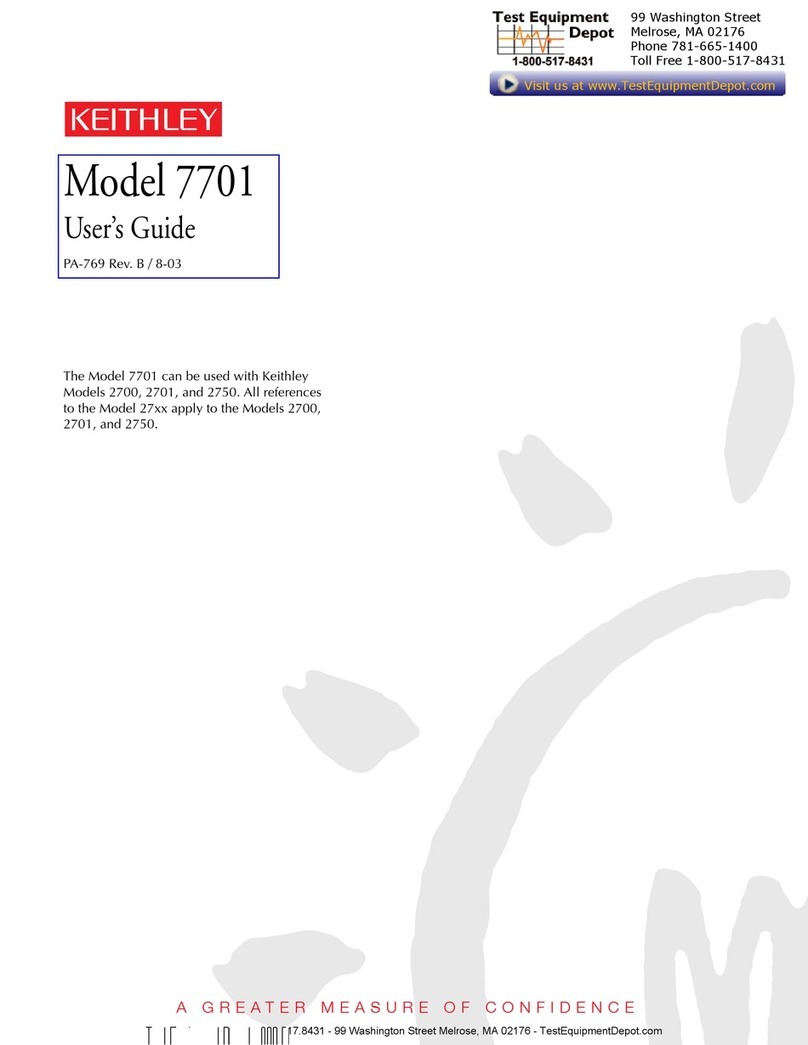
Keithley
Keithley 7701 User manual

Keithley
Keithley 7702 User manual

Keithley
Keithley 7711 User manual
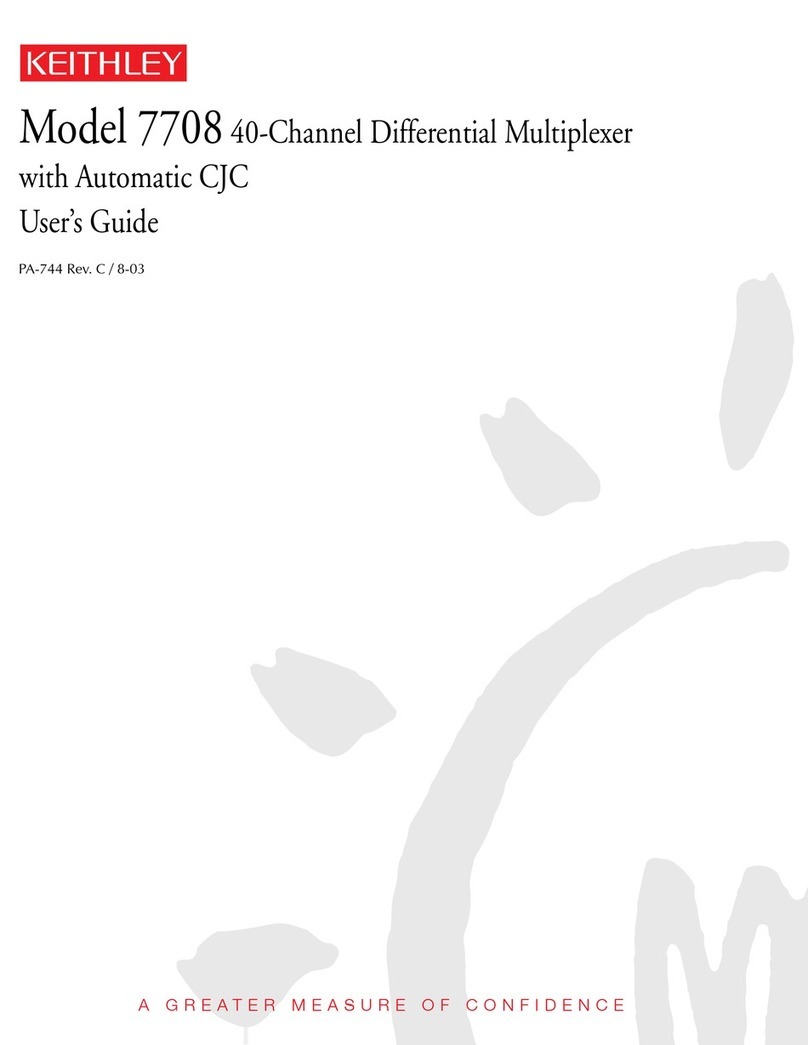
Keithley
Keithley 7708 User manual
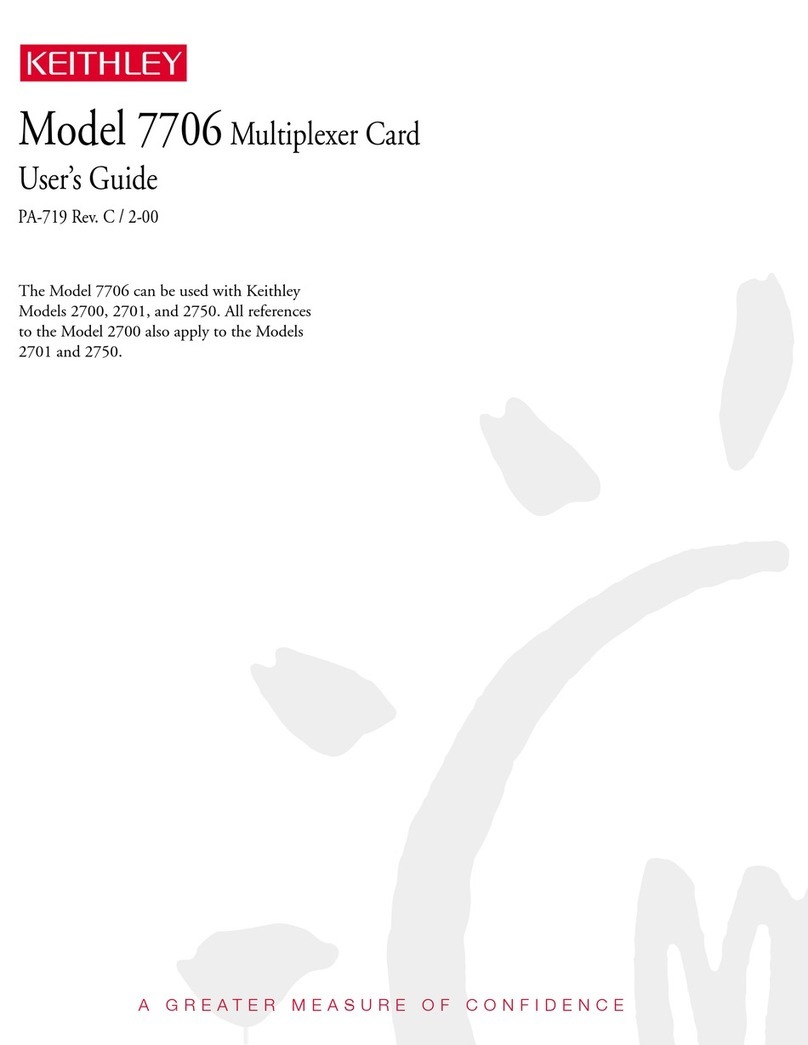
Keithley
Keithley 7706 User manual
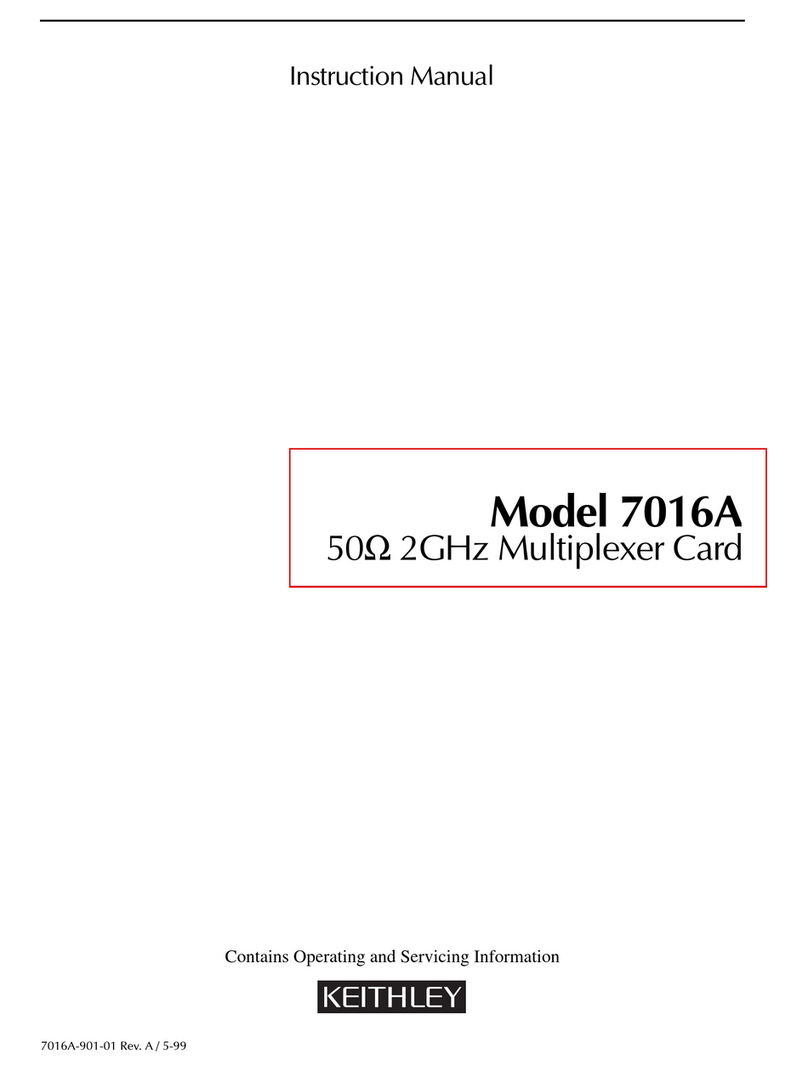
Keithley
Keithley 7016A User manual

Keithley
Keithley 7710 User manual
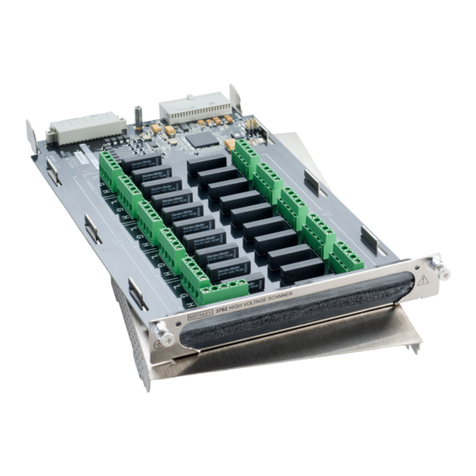
Keithley
Keithley 3706A User manual
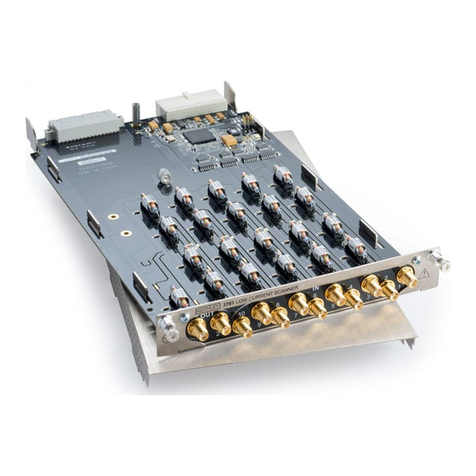
Keithley
Keithley 3761 User manual
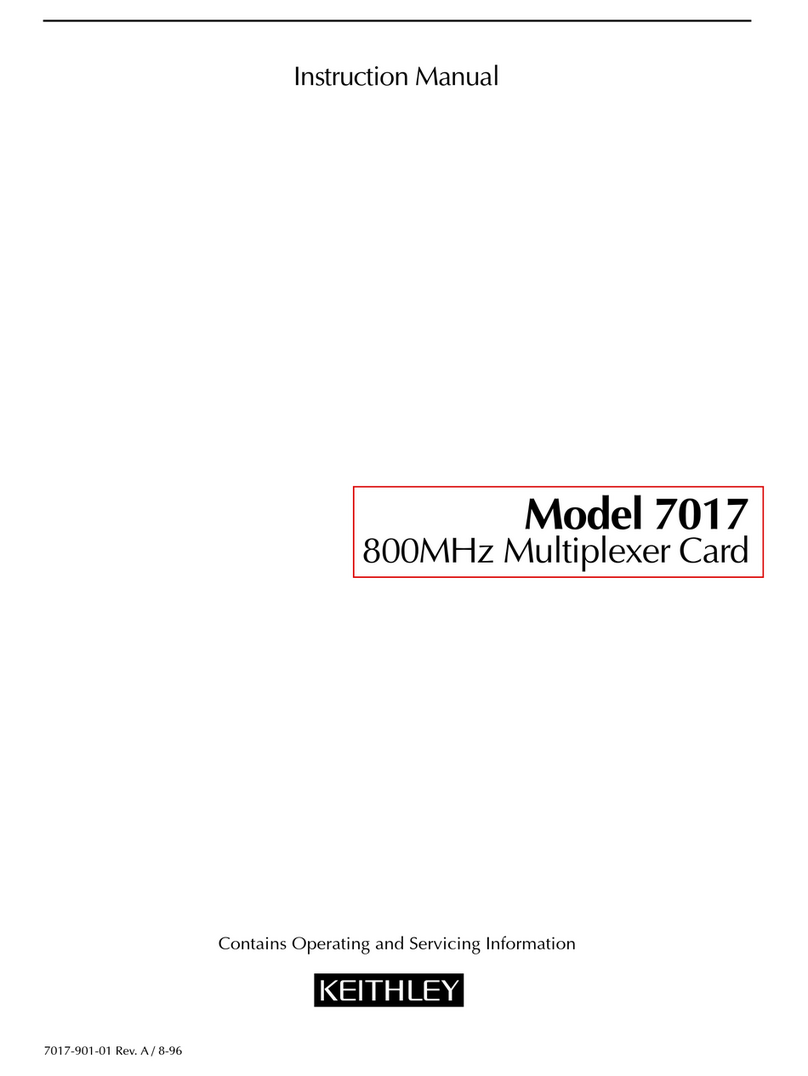
Keithley
Keithley 7017 User manual




